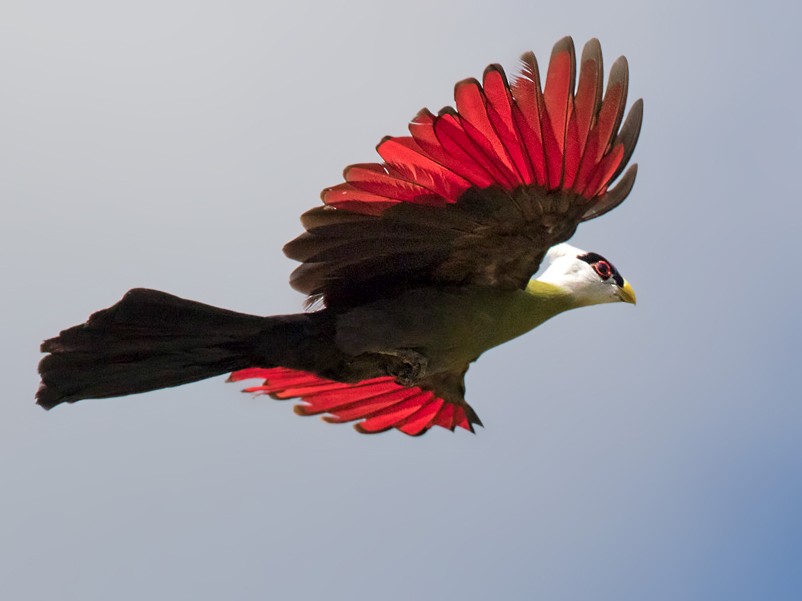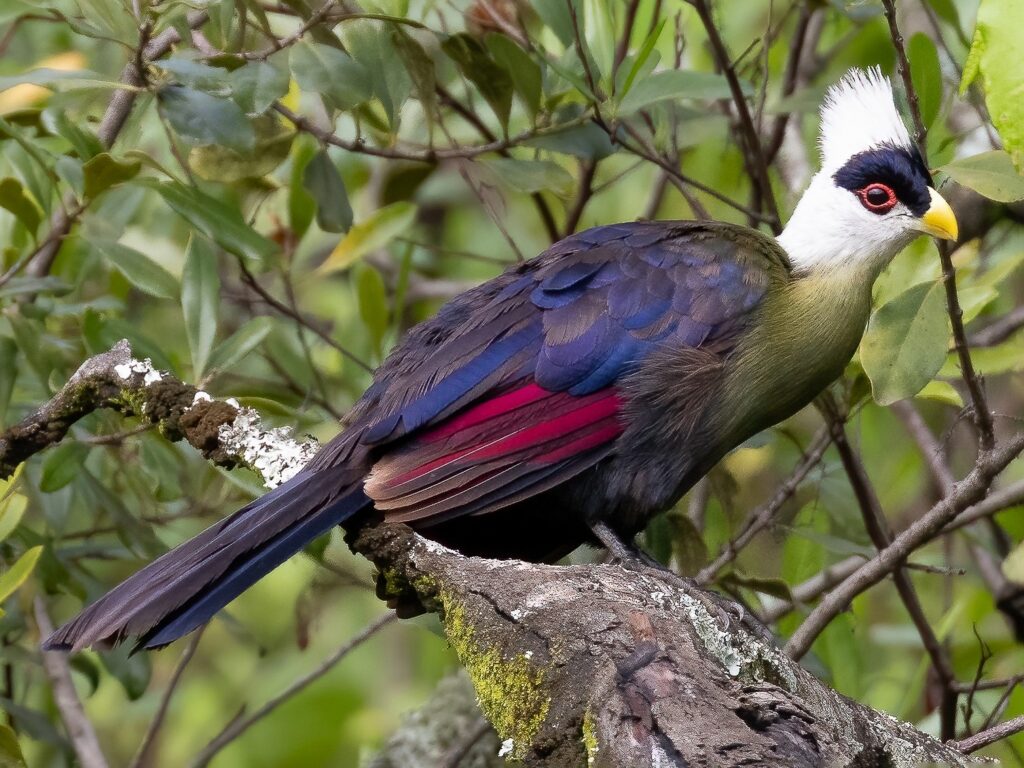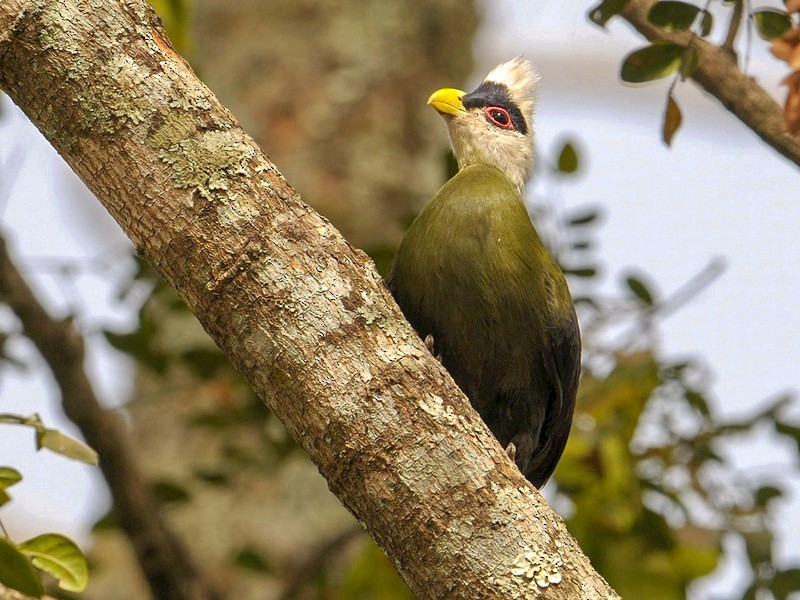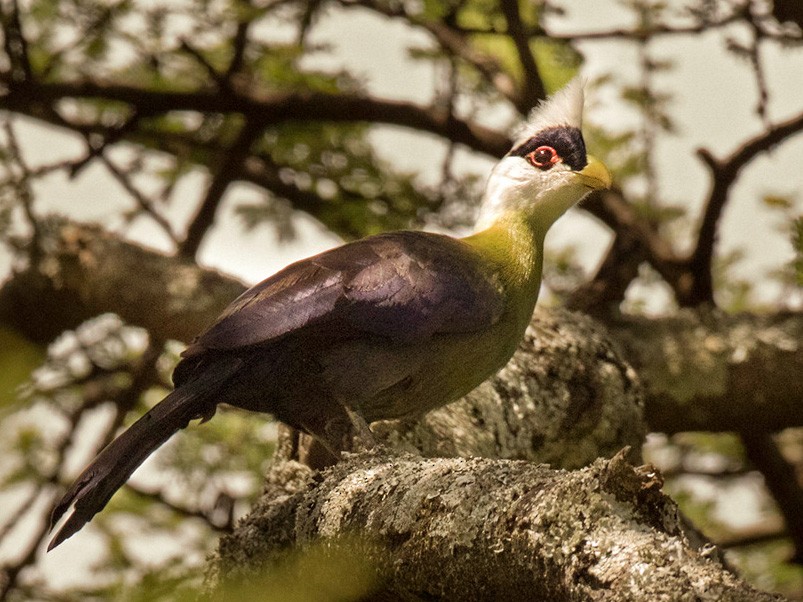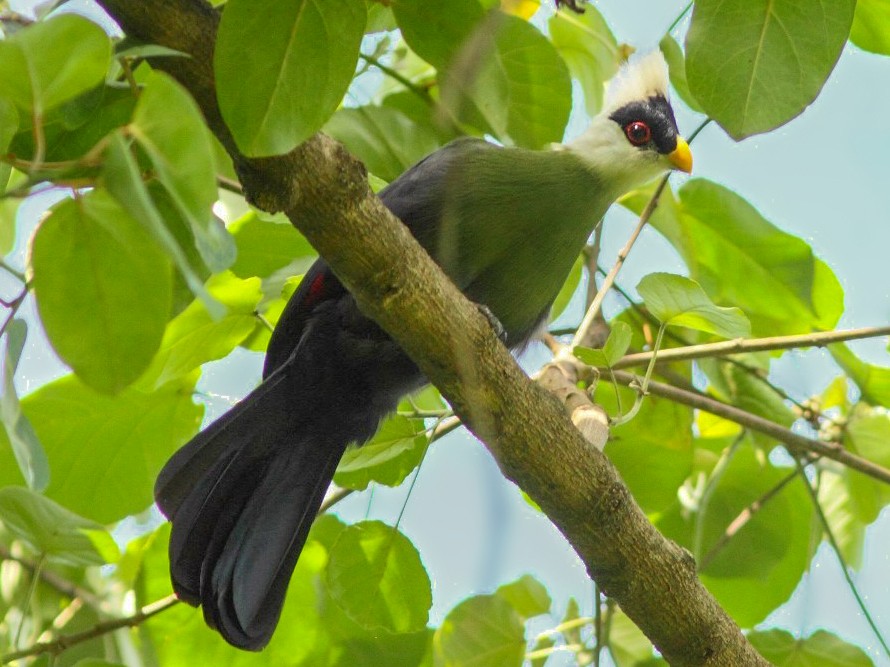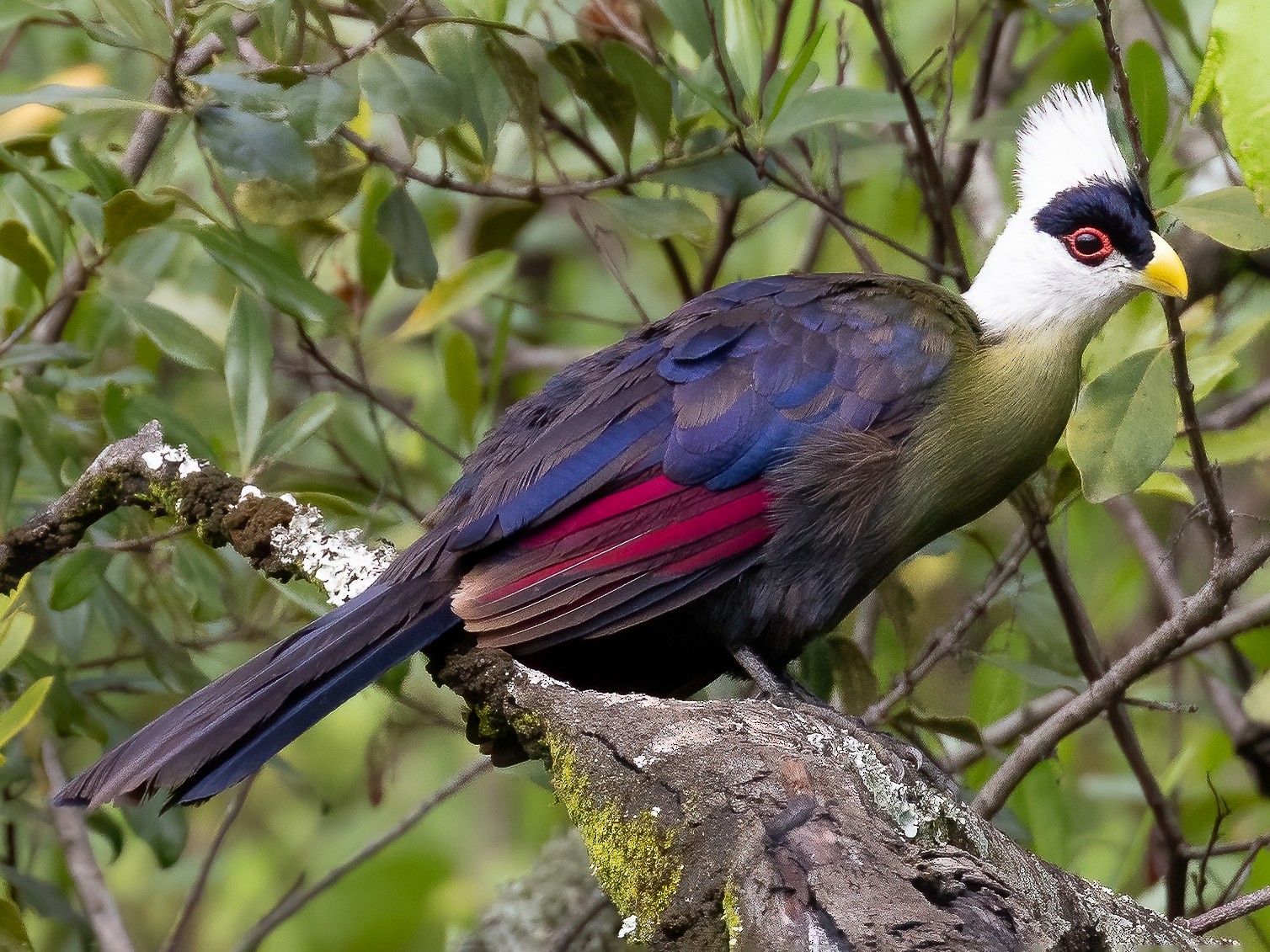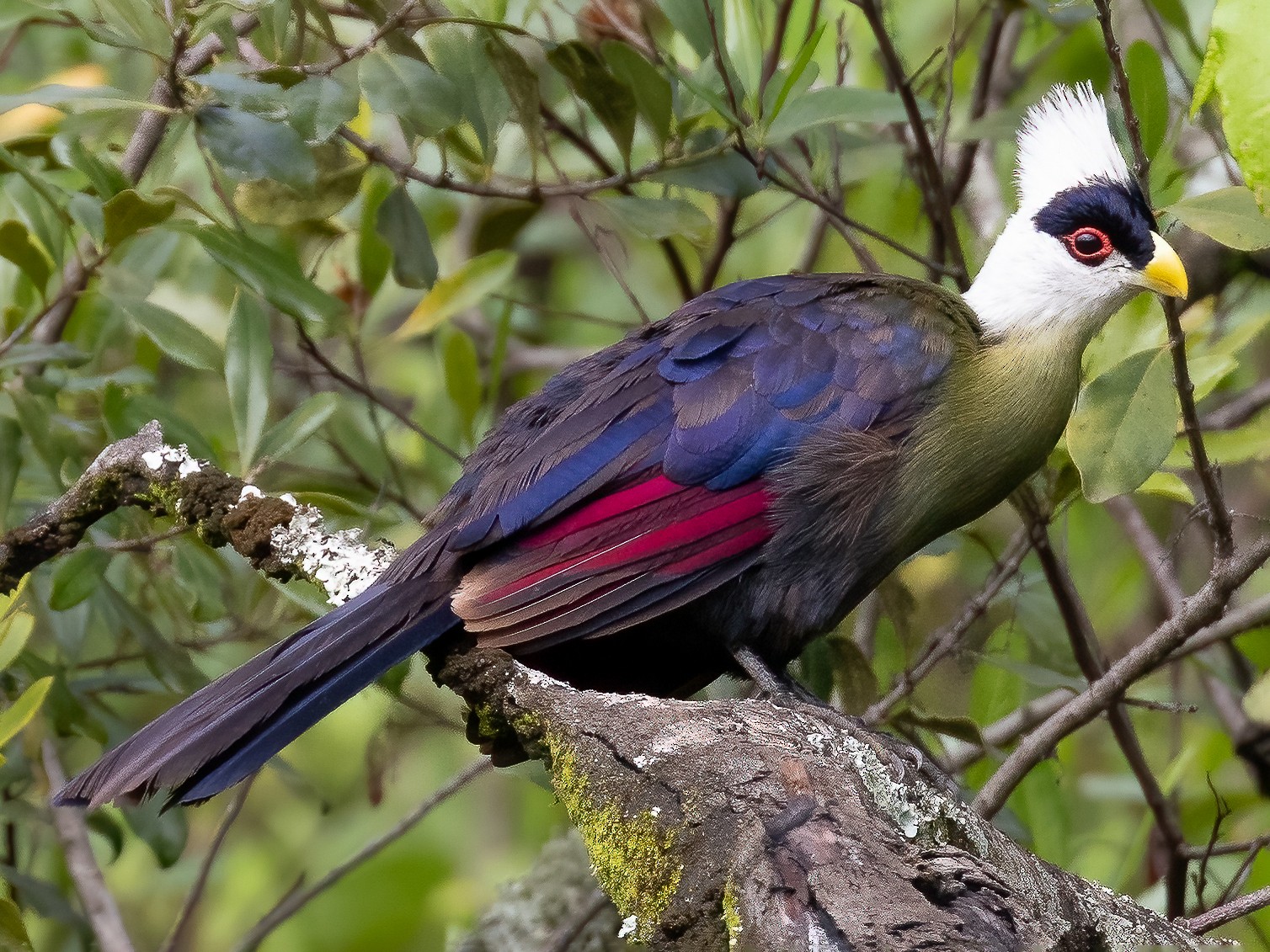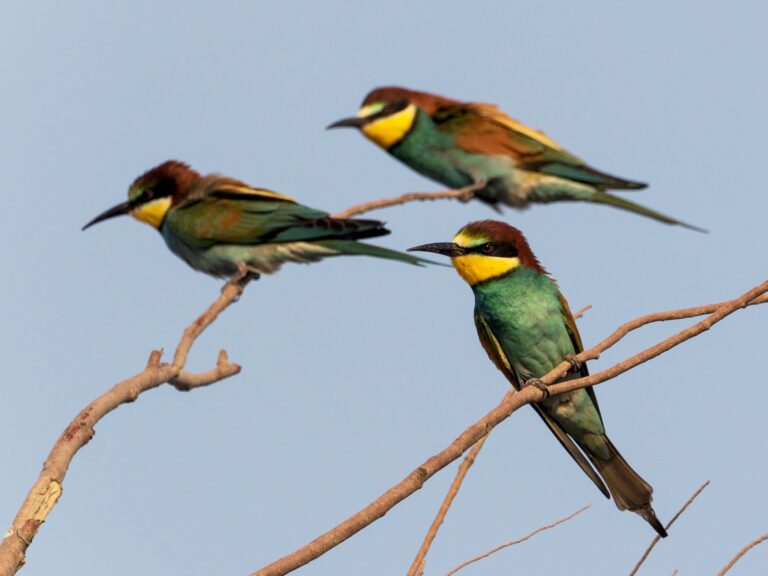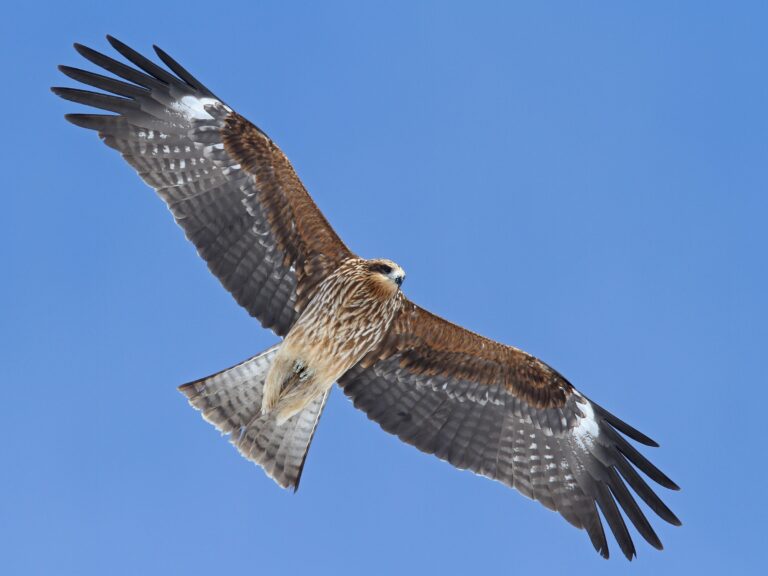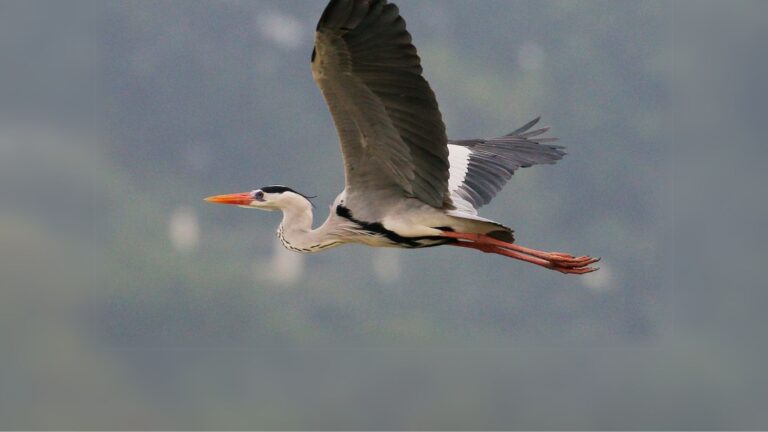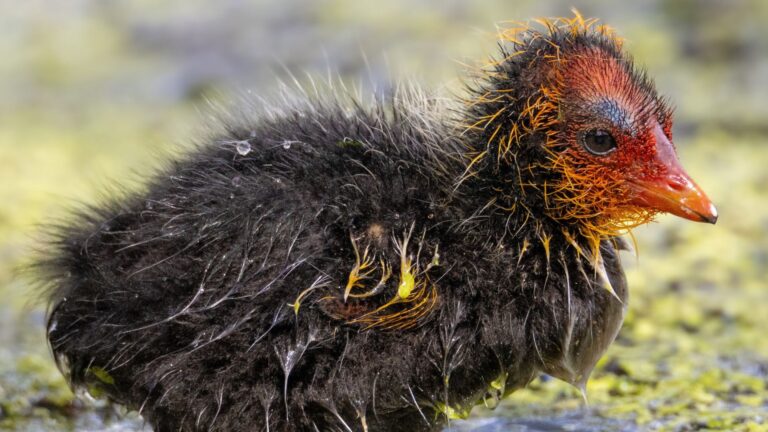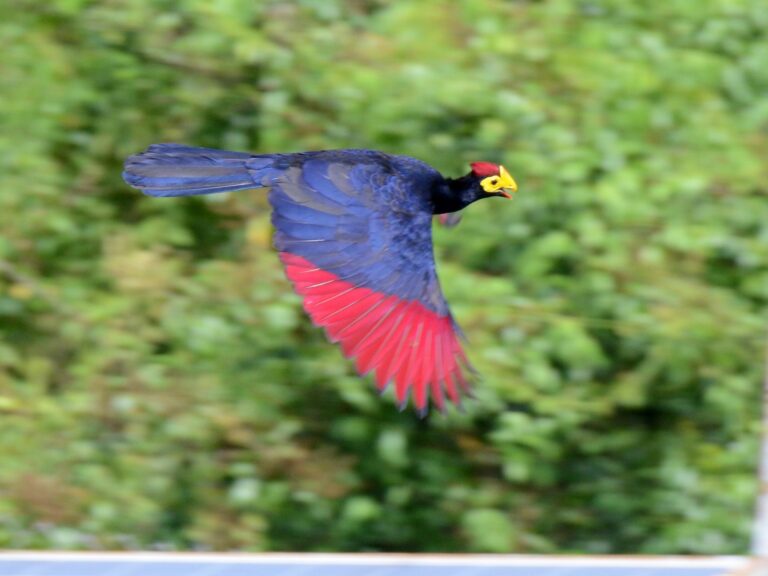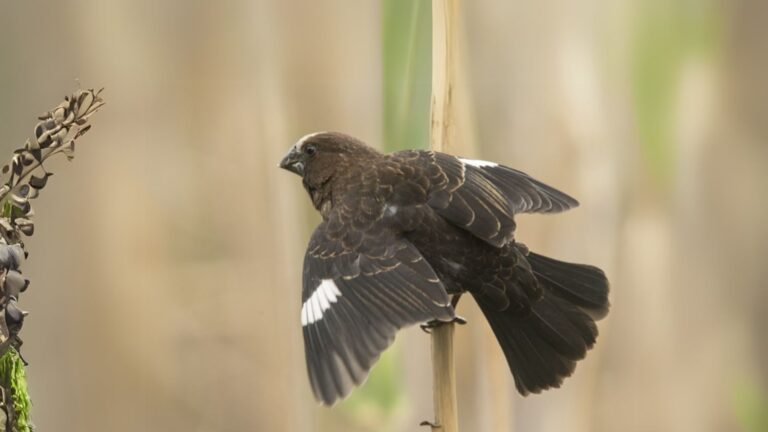White-crested Turaco Discover the Vibrant Beauty of This Unique African Bird
With vibrant green feathers, a bold white crest, and a deep red eye patch, the white-crested turaco is easily one of Africa’s most eye-catching birds. This species mostly sticks to north-central Africa, from Nigeria all the way to Kenya.
This Turaco prefers forested habitats, where it can move through the trees with surprising agility. The white-crested turaco isn’t just about looks; it’s got a real connection to forest environments and an unusual spot among the turacos.
Known as Tauraco leucolophus, this bird belongs to the Musophagidae family. Turacos as a group are famous for their bright colors and quirky behaviors.
If you’re curious about their range and genetic diversity, check out this phylogeographic resource.
Key Takeaways
- The white-crested turaco is easily identified by its striking appearance.
- This species has a wide range across African forests and woodlands.
- Turacos have unique features and an important role in their ecosystems.
Taxonomy and Classification
You can spot the white-crested turaco by its dramatic white crest and green body. It’s part of a bird group known for wild colors and rare pigments you don’t see in many other birds.
Scientific Classification
The scientific name is Tauraco leucolophus. It’s in the class Aves, order Musophagiformes, and family Musophagidae—the turaco family.
Here’s a quick summary:
| Rank | Name |
|---|---|
| Kingdom | Animalia |
| Phylum | Chordata |
| Class | Aves |
| Order | Musophagiformes |
| Family | Musophagidae |
| Genus | Tauraco |
| Species | Tauraco leucolophus |
People sometimes compare this bird to plantain-eaters, which are in the same family. But the white-crested turaco has a more limited range and that unmistakable crest.
Relation to Other Turacos
The white-crested turaco is closely related to other turacos. DNA studies show the genus Tauraco includes several species with similar features, like the green turaco and violet turaco.
Still, it stands out for its big white crest and different range in north-central Africa. Recent research suggests you can’t always split up Tauraco species just by looks—genetic data reveals deeper relationships.
The white-crested turaco tends to share its habitat with other turacos but doesn’t interbreed with them. For more on turaco genetics, see this phylogeny and classification study.
Family Musophagidae
All turacos, including the white-crested turaco, belong to the Musophagidae family. Some call this family the “banana-eaters,” but most species actually go for fruit, leaves, and flowers.
These birds are called near-passerines, meaning they’re loosely related to songbirds. Musophagidae is a small family, mostly hanging out in sub-Saharan Africa.
You’ll find grey turacos, green turacos, and plantain-eaters here. What makes them special? They have pigments—turacin and turacoverdin—that give turacos those wild green and red colors.
If you want more detail on where the white-crested turaco fits, see this overview on turaco classification.
Physical Characteristics
The white-crested turaco is a striking bird with a bold crest, colorful feathers, and a solid, athletic build. Its look really separates it from other Musophagidae species.
Plumage and Crest
You can’t miss that tall, white crest—it stands straight up and grabs your attention right away. The rest of the bird shows off greens and blues, with darker shades on the wings and back.
Feathers on the neck and belly are lighter, sometimes soft green or grayish. Around the eyes, there’s often bare skin, which makes the red eye-ring pop against the crest.
The tail is long, with a blue or green shimmer that can look almost metallic in bright light. These colors help with camouflage in the treetops but also make the bird stand out to its own kind.
Size and Body Structure
The white-crested turaco usually measures 42 to 45 centimeters long. It’s got a slim, medium build compared to other turacos.
Wings are rounded, which is great for hopping between trees instead of flying long distances. The body is built for agility, letting it dart among branches.
Its legs and feet are strong, so it can grip twigs and even climb up trunks. The beak is short and curved—perfect for eating berries, fruit, and leaves.
Weight ranges from 200 to 300 grams, so it’s light but still sturdy enough for an active life in the trees.
Unique Features
One thing that really stands out: those red flight feathers. Unlike most birds, this red comes from a pigment called turacin, unique to turacos.
When it flies, you’ll catch flashes of crimson under the wings. The voice is another giveaway—a series of loud, rhythmic calls that echo through the forest.
Its feet are zygodactyl, with two toes forward and two back, which helps it grip and balance. These features help the white-crested turaco do well in the dense forests of central and western Africa.
Habitat and Distribution
The White-crested Turaco lives across a wide belt of central Africa. Big populations show up in Nigeria, Congo, and Kenya.
This bird prefers dense forests, but it’ll take other wooded habitats if there’s enough food and cover.
Range in Africa
You’ll find the White-crested Turaco from eastern Nigeria through Cameroon and into the Congo Basin. It even pops up in parts of western Kenya.
People have spotted it in South Sudan and Uganda too, so it’s got a real hold on the tropical belt. The bird rarely strays outside these zones, since it depends on forest.
Populations are denser where forests are still healthy and mostly untouched. For a closer look, here’s a range map and discussion for birders and researchers.
Preferred Forest Habitats
The White-crested Turaco mostly sticks to primary forests, gallery forests, and riverine woods. Tall trees offer food, nesting spots, and shelter from predators. The forest canopy is their main hangout, making it easy to find fruit. In some areas, you might see them in secondary forests or even big gardens—if there are trees and fruit, they’ll make do.
Still, habitat loss and deforestation are real threats. As forests vanish, populations drop and birds are pushed into less ideal spaces. If you want to dig deeper into habitat threats, check out research on bird habitats in Mount Elgon Forest and the impact of habitat destruction.
Key Regions: Nigeria, Congo, and Kenya
Nigeria is a hotspot for the White-crested Turaco, especially in the eastern forests. The bird is also common in the Congo Basin, where huge forests give it plenty of space.
In Kenya, you’ll mostly find them in the west, where some forest patches still hang on. These three regions really show how much this species depends on Africa’s tropical forests.
Researchers say forest management and protection are crucial for the survival of this bird species across Africa. Their future depends a lot on conservation and awareness in these areas.
Behavior and Ecology
The white-crested turaco is active in the trees and has a strong sense of group living. It interacts with the forest environment in lots of ways, from its food choices to raising its young.
Diet and Feeding Habits
White-crested turacos mostly eat fruit—they’re classic frugivores. They love soft, ripe fruits that grow high up in the canopy. Sometimes, they’ll nibble leaves, flowers, or even a stray insect, but fruit is the main course. By eating fruit and moving around, these birds help spread seeds and plant new trees.
Other turacos do the same, so it’s a family thing. You can read about their seed dispersal skills if you’re curious. They usually feed in the early morning and late afternoon. You’ll see them moving quietly through the branches, searching for the next bite.
Social Structure
White-crested turacos are social. They stick together in small groups, often four to ten birds. Groups are usually made up of family and mates. Communication is big for them—calls and body language keep everyone connected, especially in thick forests.
Turacos aren’t really aggressive, but they’ll warn each other or chase off intruders if needed. Grooming and sharing food also happen in these flocks, helping everyone stay safe and tight-knit.
Breeding and Life Cycle
Breeding season for white-crested turacos tends to line up with the rainy months, when food is everywhere and life just gets a little easier. The pair gets to work building a basic, platform-style nest up in the fork of a tree.
The female lays two or three eggs—never a huge clutch. Both parents swap shifts, keeping the eggs warm and later feeding the chicks once they hatch. Chicks come into the world pretty helpless, honestly. They stick around in the nest for several weeks before they even think about trying to fly.
Young turacos don’t just bolt after fledging. They hang out with their parents and the rest of the group, picking up the skills they’ll need to survive in the forest. If you want to dig deeper into their classification and lifestyle, check out this research on the phylogeny and biology of turacos.
Conservation and Significance
White-crested turacos live across central and east Africa. Their status, ecological role, and cultural impact all shape how we value them.
Conservation Status
You’ll find the white-crested turaco from Nigeria to Kenya, mostly hanging out in forests and woodlands. They’re not listed as endangered right now, since their overall numbers seem steady, but local populations can take a hit if forests disappear.
Some regions, like the Mount Elgon forest, actually list this bird as one to watch for conservation. Conservationists keep an eye on its habitats, especially as people clear more land for farms or settlements. Spotting this bird in an area can signal a healthy woodland. It’s not just about the turaco—it’s about the whole ecosystem.
Protecting forests does more than just help turacos; it supports a bunch of other African birds, too. Recent studies point out the need for ongoing habitat preservation and careful monitoring of birds with limited ranges like this one. You can find more on their status in Africa in reports on Mt Elgon bird species.
Role in Ecosystem
White-crested turacos really pull their weight as seed dispersers. They munch on a mix of native fruits, spreading seeds and helping the forest grow back. By doing this, they give a boost to other wildlife that count on those plants. It’s a pretty neat cycle.
These birds are part of a tangled food web. They eat fruit, sure, but they’re also on the menu for bigger birds and mammals. Their foraging can shape which plants thrive and where they spread. It’s all connected in ways that are sort of fascinating, if you ask me.
Cultural Importance
People across Africa admire the white-crested turaco for its bold look and unmistakable calls. That white crest and green plumage make it a standout in stories and artwork. Some communities see the bird as a symbol of the wild, untamed forests of central and eastern Africa. Birdwatchers travel from all over hoping to spot one, which brings a bit of eco-tourism money to the region.
The turaco helps people feel connected to nature. Its role in local culture and tourism keeps it relevant, not just for scientists but for anyone who cares about biodiversity.
If you’re curious about the bigger picture, there’s more to read on the phylogeography and classification of turacos.
Frequently Asked Questions
The White-crested Turaco stands out for its calls, its look, and where it lives across Africa. People often wonder about its habitat needs and whether it’s okay to keep one as a pet.
What distinctive vocalizations does the White-crested Turaco make?
This bird’s calls are loud and rhythmic, echoing through forests and woodlands. The main sound? Deep, booming “kwah-kwah-kwah” notes.
They use these calls to talk to each other and claim their space. It’s a sound you won’t forget if you hear it in the wild.
How can you differentiate between male and female White-crested Turacos?
Honestly, males and females look almost identical. Both rock that bright green body, white crest, and red wing patches.
If you want to tell them apart, you’ll probably need to watch how they act during courtship or nesting. Their feathers don’t really give anything away.
In what regions can the White-crested Turaco typically be found?
These turacos call north-central Africa home. Their range runs from Nigeria all the way to Kenya, popping up in forests and woodlands across the region.
For more info on where they live, check out this detailed White-crested Turaco’s range.
Is it legal or ethical to keep a Turaco as a domestic pet?
Whether you can keep a White-crested Turaco as a pet really depends on your country’s wildlife laws. Some places ban it to protect wild populations.
Even if it’s legal, it’s tough to meet their needs at home. These birds need room to roam and a specific diet, so their welfare is usually better in the wild or in conservation-focused aviaries.
What are the key environmental needs for the White-crested Turaco’s habitat?
White-crested Turacos need forests thick with trees for shelter and food. They eat fruit, leaves, and flowers, mostly from woodland and riverine forests.
Their ideal habitat is dense and undisturbed by people. If you’re hoping to see one thrive, that’s the kind of place you should look.
How long is the average lifespan of a White-crested Turaco in the wild?
Out in the wild, White-crested Turacos tend to live around 6 to 10 years. Things like food, weather, and predators really shape how long they make it. If they’re kept in captivity and get good care, they can sometimes stick around even longer.
